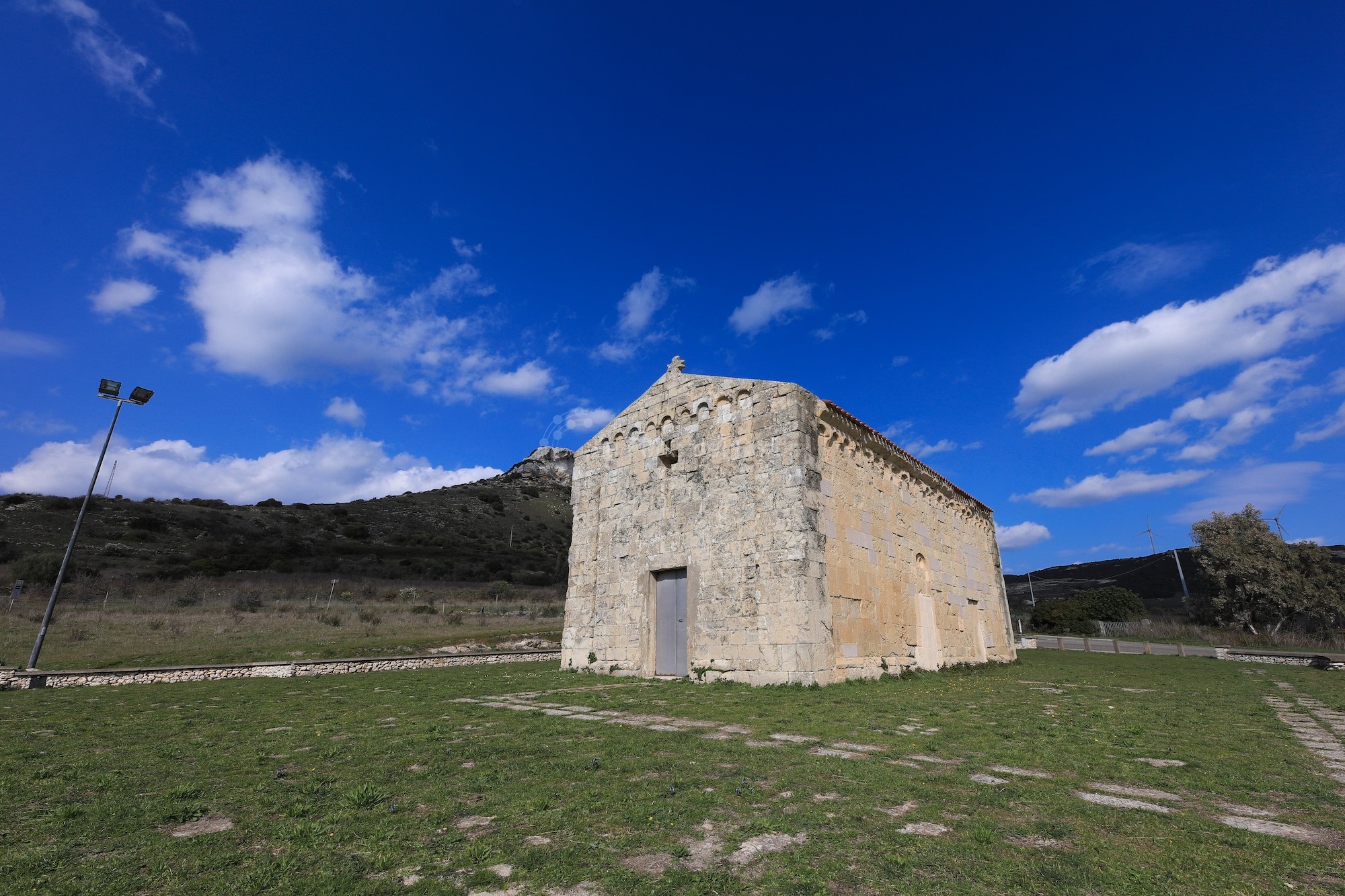
Florinas
Church of Saint Anthony the Abbot
The small Church of Saint Anthony the Abbot, unlike the other churches in the historic centre, is found in the countryside. It is a building with a simple and modest shape, decorated only by hanging arches and a cross shape opening on the façade, along the same axis as the entrance portal. The church is in Romanesque style, with a clear Tuscan influence, and was probably constructed between the 11th and 12th centuries. It has an apse – slightly stocky when seen from the front – decorated by monolithic blind arches. On the top there is an unpolished monolithic cross. On the southern side there are two doors, one has been walled; it is small and is adorned with a typical Romanesque design. The inside has a barrel vault – a solution which was used in the 17th and 18th centuries to substitute old trussed wooden roofs. There is a Holy Water stoup of the 17th century made by Sardinian stonemasons who sculpted floral patterns in the rock basin. Of particular interest is the eighteenth-century carved polychrome statue of Saint Anthony, that has a black mozzetta under which there is a white rochet decorated with red flowers. At the feet of the saint there is a piglet, his distinctive feature. Saint Anthony is celebrated every year on January 17th. At the moment the building needs renovation work, namely cleaning and consolidation of the stone material, the reinstallation of the electrical system and renovation of the fixtures. The renovation work for the church of Saint Anthony the Abbot is included in the program “Sardinia in 100 churches” (“Sardegna in cento Chiese”) for which a specific agreement was made between two entities, RAS (Autonomous Region of Sardinia) and CES (Sardinian Episcopal Conference). The plan is to prepare information panels following a unitary project and to update the data sheet already present in the Cultural Heritage Information System. Together with what came up while working on the Territorial Development Plan, the proposal is among those that aim at intervening on some of the rural churches present in the territory of Coros and Anglona, to create a web of cultural and environmental attractions, and give them touristic value.
Source: Art in Florinas (in Italian), by Wally Paris – post on FB, by Unione Coros
